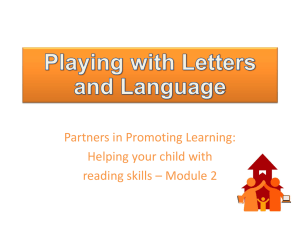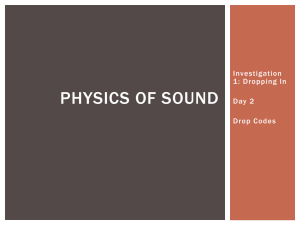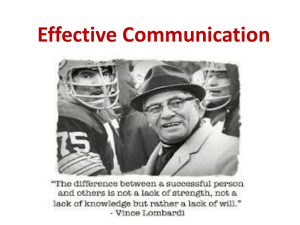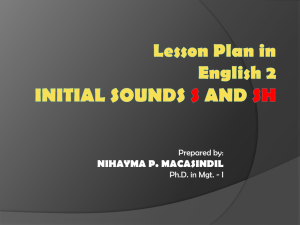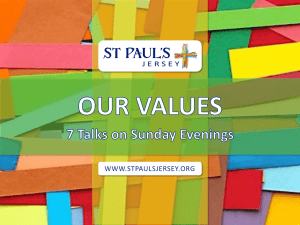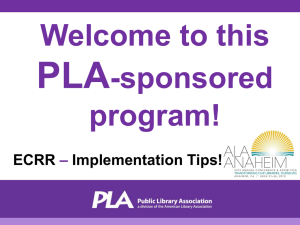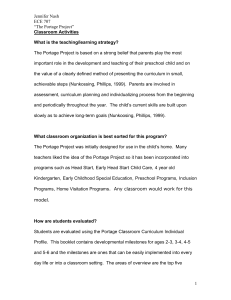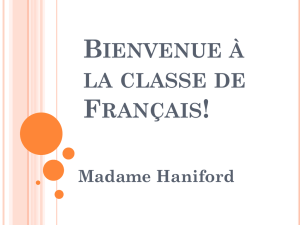L`alphabet c`est cool! - Edinburgh Modern Languages
advertisement
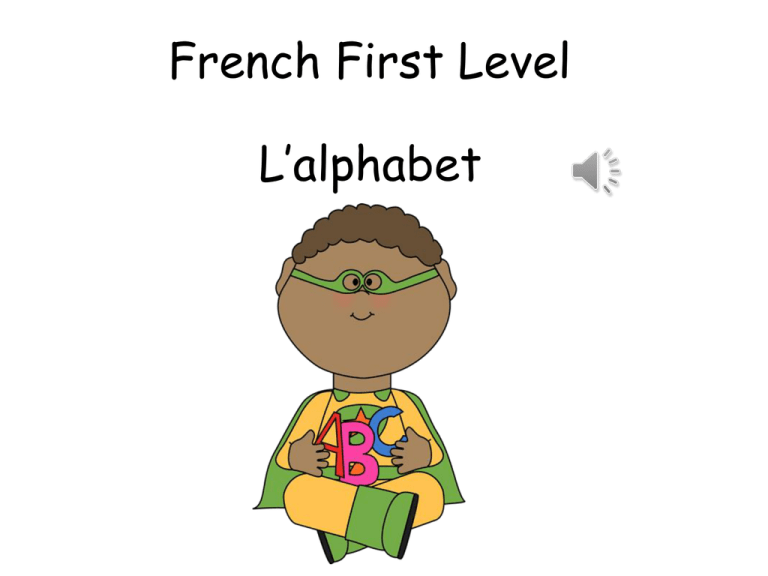
French First Level L’alphabet First Level Significant Aspects of Learning • Use language in a range of contexts and across learning • Continue to develop confidence and enthusiasm to communicate using the language being learnt • Develop an awareness and understanding of patterns and sounds of language • Begin to develop an understanding of, interest in and respect for other countries, cultures and languages • Appreciate and understand the value of language learning • Recognise familiar written words when listening • Explore how gesture, expression and emphasis are used to help understanding. • Listen, recognise and respond to familiar voices in short, predictable conversations • Understand and respond to familiar spoken vocabulary • Actively take part in daily routines • Listen and join in with stories, song or poem • Enjoy engaging with simple and familiar texts on my own and with others using resources to support learning • Participate in familiar games, paired speaking and short role plays • Take part in simple, paired conversations about themselves giving simple opinions and asking simple questions Vocabulary 10. The Alphabet At First Level the focus should be on being able to say the alphabet in French. L’alphabet the alphabet a b c d e f g h i j k l m n o p q r s t u v w x y z ah bay say day eu ef jay ash ee jee ka el em en oh pay koo er es tay oo vay doob le vay eeks eegrek zed For First Level focus mainly on being able to say the alphabet in French, working your way up to spelling in French at 2nd Level. L’alphabet en français ah bay say day euh eff jay ash ee jee kah ell em en oh pay coo err ess tay oo vay doob-le-vay eex ee-grek zed Embedding the language You could use the alphabet as a countdown in class for getting tidied up etc. You could ask pupils how something might be spelt in French. This can really help to enhance their spelling English as they are thinking twice as hard about the letter sequencing of a word. Sample activities You will find a bank of sample activities which you can use to practise the vocabulary in the classroom. This is not a prescriptive list of activities and you can use or adapt them to suit the needs of your class. L’alphabet c’est cool! a b c d e f g h i j k l m n o p q r s t u v w x y z L’alphabet c’est cool! a b c d e f g h i j k l m n o p q r s t u v w x y z L’alphabet c’est cool! a b c d e f g h i j k l m n o p q r s t u v w x y z L’alphabet c’est cool! a b c d e f g h i j k l m n o p q r s t u v w x y z L’alphabet c’est cool! a b c d e f g h i j k l m n o p q r s t u v w x y z Match the sounds to the letters • For this activity you will need the “Letters co-op task cards” document which is on the website in the extra resources section. • Print off the sounds and place them around the classroom at “stations”. • Pupils should write the alphabet in their jotters. • In pairs, pupils will then visit each letter sound for a set time and will copy it down beside the corresponding letter. • At the end, you can check these with the sound files on the vocabulary slides. Trouvez les sons… qui correspondent… …aux lettres. Par exemple… A = Ah Ecoutez l’alphabet C’est correcte? Cochez les réponses. Linking the sounds to actions You can link the sounds to actions – see if the pupils can pupils can come up with a set for your class. Some suggestions: Ah – like sticking your tongue out for a doctor Bay – a coastal bay or in French baby is bébé so you could do a baby in your arms mime. Say – Is like saying something so you could do something to mimic that. Day – like a day / sunrise for example Euh (e) – sound a bit like being punched in the stomach! Etc. These are fun to make up and it’s good to let the pupils choose which ones help them remember best. Once you’ve got a set you can practise them altogether. Alpha-tig! • This is best played in a gym hall/outside. • Choose 3 or 4 pupils who will be it. • Give each of remaining pupils a letter so that they make up the whole alphabet. Some people will have two letters. • They will then write their letter on a bit of paper and stick it to themselves with sellotape etc. Double up letters if necessary. • Make sure they each know their own letter and know how to pronounce it in French. You could do this by getting them to line up in order of the alphabet and to say it along the line. • You will then say a word and the pupils who are “it” have to then tig those with the letters. It’s the rest of the alphabets job to protect them! • Once they have the letters, bring them out to the front and they can spell out the word in French. Alpha-shapes Say a letter and get the pupils to try and form that letter by shaping themselves like in on the floor (or standing). Get everyone to say it once they are in position! Songs and videos! You will find a bank of sample songs and videos which you can use to practise the vocabulary in the classroom. This is not a prescriptive list of songs and you can use or adapt them to suit the needs of your class. La chanson de l’alphabet A B C D E FG HIJK LMNOP QRS TUV WXYZ Maintenant je les connais Toutes les lettres de l’alphabet C’est l’alphabet song Military style alphabet A comme abricot French alphabet song ICT Resources online You will find a bank of sample ICT activities which you can use to practise the vocabulary in the classroom. This is not a prescriptive list of activities and you can use or adapt them to suit the needs of your class. Each of the slides contains an image of the website page. If you click on the image it will take you to the page. Alternatively you can use a link address which you will find in the slide notes. Poisson rouge alphabet Lexique.fr Au revoir!

